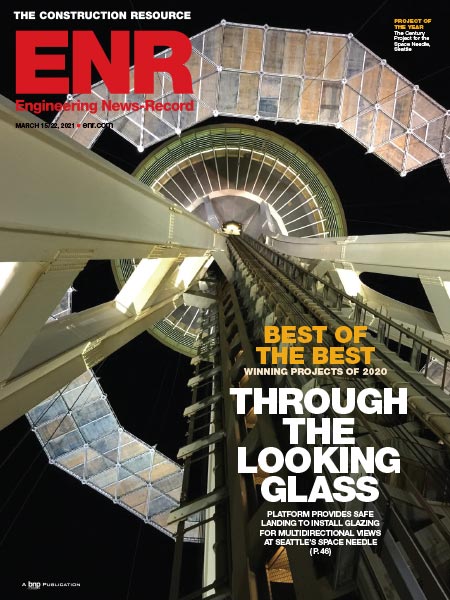The phone call was from Chicago, and Theodore Zoli, vice president and bridge technical director in the New York City office of HNTB Corp., was working on a project. When he took the call, he wondered what might be wrong. Daniel J. Socolow, director of the fellows program at the John D. and Catherine T. MacArthur Foundation, broke the news to him: He was one of 24 recipients chosen to receive $500,000 over the next five years, no strings (or bridge cables) attached, for his work on bridge design and security reinforcement.“I almost fell off my chair,” recalls Zoli, 43.


In addition to helping design iconic structures like Boston’s cable-stayed Zakim Bridge, part of the city’s Central Artery/Tunnel project, Zoli has developed a lightweight, blast-resistant composite material that so far has been applied on six bridges, with two more applications currently under way. Citing security concerns and client confidentiality agreements, he will not disclose the nature of the material, the clients or the locations of the bridges. However, research on the first project began in October 2001.
“I walked away from 9/11 looking at structural vulnerabilities and member loss, with the perspective that we need to rethink how we design for damage tolerance,” he says. “We need to protect against three or four types of hazards. I had very little idea of what I was doing and depended on the patience and expertise of others helping me.”
The goal for the first bridge was to have specs on the street by Christmas, after assessing its structural vulnerability. The material he developed has since been used to harden a “half dozen” major bridges, he says.
Socolow says other structural engineers have received MacArthur grants since 1981, but Zoli may be the first recipient to win based on work linking bridge design and security. He is the first bridge engineer to be recognized by the foundation.
The selection process begins by the foundation choosing nominators from as broad a range of fields as possible. At any given time, there are more than one hundred active nominators. Their nominees are evaluated by an independent selection committee made up of leaders in the arts, sciences, humanities and for-profit and nonprofit communities. Twenty to 30 fellows are selected each year.
“We ask hundreds of nominators to nominate those who are tremendously creative and show promise of doing more,” says Socolow. “The idea is that there are people out there for whom this support will make a difference in their work.”
The process of vetting a nominee can take years. The names of foundation nominators are not released.
“About a year ago, thinking back, some colleagues were asking me strange questions about my thoughts on research and so forth,” Zoli recalls. “Maybe that had something to do with it. I haven’t had the audacity to ask. I’m not sure I want to really know. I can look around and see colleagues that I’d say are more deserving.”

Colleagues beg to differ. “Ted is one of those people who you just know...that we’re going to see great things from them,” says Terry Greene, city architect for Cupertino, Calif., which enlisted Zoli’s help in fast-tracking the redesign of a 325-ft-long footbridge over Interstate 280.
“I remember once, while a small group of crusty but very experienced welders at a large and well-known steel fabrication plant on the West Coast were waiting for me to join an owner’s meeting, Ted arrived early and began talking to them about new ways to build bridges out of lightweight materials, using innovative methods of connection,” Greene recalls. “I walked in, and not wanting to interrupt, sat in the back. I soon realized every one of those crusty old steel workers was listening to young Ted, half their age, talking to them with terminology they all understood and teaching them new ways to do old things.Ted had a deep understanding of their craft, the properties of steel, aluminum, wire rope and the tools and processes of building great bridges. When he finished, we felt like we were on our way to master’s degrees in structural engineering.”
Zoli, who earned his master’s degree in civil engineering from the California Institute of Technology and a bachelor’s degree in civil engineering from Princeton University, will use the grant money to pursue more research using actual models. “I want to move, in the direction of long-span bridges, toward a dual hope of enhanced efficiency and safety. That’s where my heart is,” he says.
One possibility is to explore the use of synthetic polyester ropes as opposed to steel cables, he says. Another focus will be on thin shell structures. “New materials, particularly using small diameter wire, offer the potential to capture the advantages of thinness,” he says.
He regards the award as recognition of his profession. “I have a responsibility to our profession to do something important,” he says. “It’s not often that we’re recognized in this way.”


